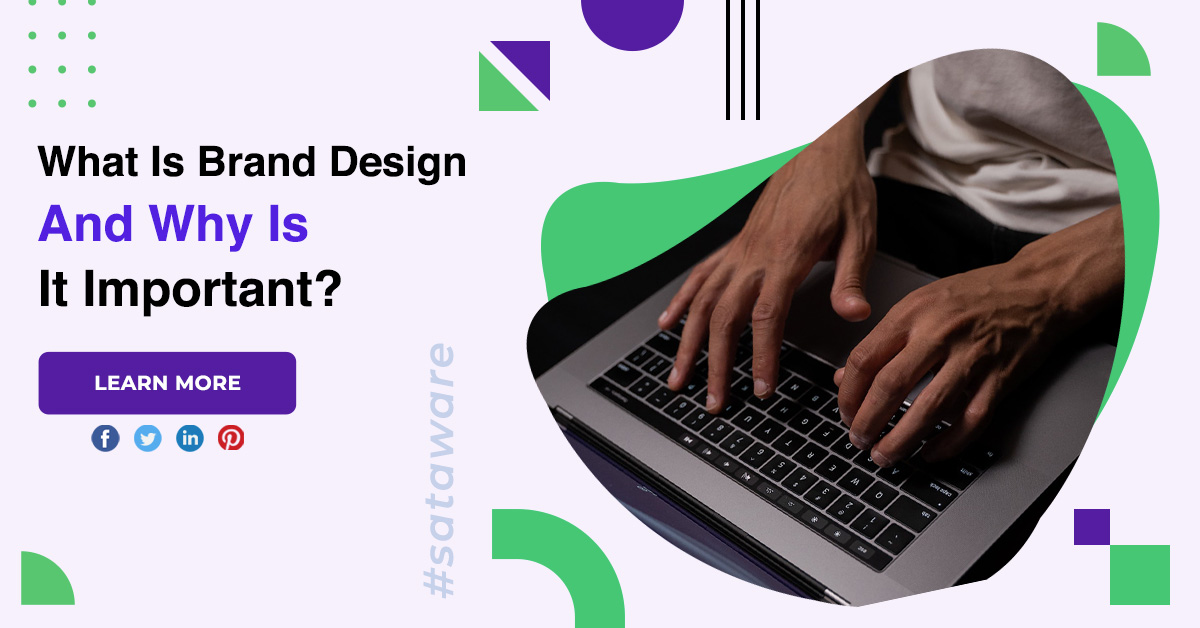What Is Brand Design And Why Is It Important?
It is effectively executed, insights from research and strategy come to life in touchpoints such as websites, marketing materials, packaging, presentations, etc. However, before any of these touchpoints can be created, you must first define the design elements that will be used.
Brand design
Colors
Colors are essential to brand design. Each color has a different impact on the psychology of a brand’s audience. Understanding this impact is key to making the most of color in brand design.
Typography
Fonts and typefaces are a unique design element because each is a design system in itself. Because they are carefully and intentionally designed, fonts bring a distinct, poised personality to brand design.
Shapes
As defined by the sequence of cognition, shape is the most basic visual stimulus. Whether the shapes are obliquely suggestive or clearly representative, they form a strong core component of the brand’s design.
Illustration
Illustration is another element that can give brand design a strong and immediate personality. It’s important to define a cohesive and unified illustration style, as well as keep in mind how the illustrations will be used with other design elements.
Iconography
Iconography is a way of communicating complex information through simplified illustrated graphics.
Texture and pattern
Texture refers to the quality of the surface in the design. Just as tactile textures can be rough, smooth, shiny, fuzzy, and so on, visual textures can redefine surface quality.
Photography
Photography is a key element of brand design and includes representative images supporting the brand’s position and personality. The style and processing of photographic images informs their influence on brand design as much as their content.
Video
Video is a unique and compelling way to introduce storytelling into your brand design. Video has been shown to hold the attention of audience members longer and more thoroughly than any other medium.
Animation and movement
Animation and movement bring an otherwise static design to life in dynamic ways. Both are best used with restraint, such as in subtle feedback for microinteractions, rather than to delight or amuse users. When used in a subtle and intentional way, animation can help users create mental models of how the system works and how they can interact with it.
Interactive elements
Interactive elements are design elements that users can interact with, usually on a website or online. By engaging the user in a dialectical relationship, interactive elements of brand design add a strong character that goes beyond mere animation or movement.
Data visualization
Data visualization is the process of representing complex data in illustrated elements such as tables and graphs. Data visualization should always be designed to be clear and understandable in addition to aesthetic appeal.
Layout
The basis of effective brand design is the way in which its visual elements are organized and placed in relation to each other. It provides balance from page to page and implements an intuitive hierarchy that makes visual communication easier to navigate.
Clarify your strategy
Effective brand design is based on a thorough brand strategy. This includes a well-defined brand framework outlining essential positioning elements such as brand compass, brand archetype, brand personality.
Design your elements
With the insights from the research and direction from the strategy in tow, you can get to work creating the brand design elements. From your logo and color scheme to typography and photography, every element should be created as an integral part of the unified aesthetic system that is your brand’s visual identity.
Conclusion
Branding is more than a design on a product, a logo or a strap. It is about all these things and more, customer experience, brand promise, company philosophy and culture.









